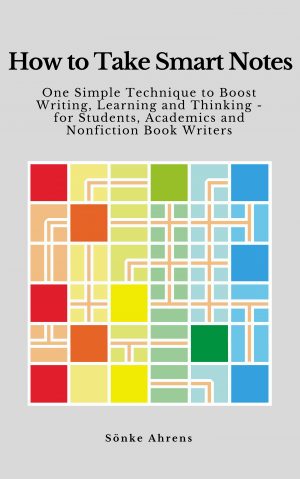How to Take Smart Notes
I’ve always found writing to be an impossibly hard thing to do. So, for the last few years I’ve been trying to learn and practice it more often.

I’ve also always felt like I have thoughts that I never really know how to express. I’m amazed when other people are able to say the things that I am thinking more clearly than the way I’ve been thinking them. I see that people who’ve studied at good universities, or are generally smarter than me are just able to do this. When I discovered this book — How to take Smart Notes by Sönke Ahrens — I didn’t expect it would have anything to do with this, but it ended up giving me an insight into the learning and writing process of academics.
The book describes an external system for reading, thinking, and writing. It argues that moving things into an external system enables learning and frees up our brains. By putting things in an external system, we give our brains permission to forget and focus instead on thinking.
The gist of the system is:
- While reading, make notes using your own words. Only when we’ve actually understood the material can we express it in our own words
- Link these notes with other notes that could be related — this helps uncover patterns. Forming these connections also helps our memory, and recall becomes easier in the correct context
Note taking process
After reading something, create a bibliographical note to keep as a reference. For each new idea coming from the reading, create a permanent note. This note should be independent — its meaning should be clear even without the context of the reading.
Permanent notes should be connected to each other. Each note should be connected to at least one other, the one that it naturally follows. It can link to any number of other notes too, when making these connections ask:
- How does it connect to…
- What is the difference between…
- What is it similar to…
While working or thinking always create fleeting or quick notes. Since this externalizes our work we’re able to pick it up again, even if we come back to it after a while. Some of these notes can later be converted into permanent ones.
graph TD wl[Working logs] --> fn Reading --> fn Reading --> ri Reading --> ln Reading --> Questions Questions --> Topics wl --> ri wl --> Questions fn[Fleeting notes] --> Inbox ri[Random ideas] --> Inbox Inbox --> pn Inbox --> Trash ln[Literature notes] --> bb[Bibliographical box] pn[Permanent notes] --> mb[Main box] mb --form connections--> Topics Topics --> rd[Rough draft] rd --> Manuscript bb --> Manuscript
Maintaining our notes like this means we have to practice elaboration, retrieval and connection, all of which lead to learning. Learning isn’t about saving pieces of information in our heads but really about building and understanding connections.
Mentions